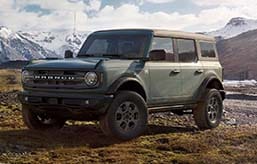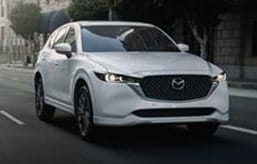- If you've got kids that means you've probably spent a lot of time looking for info on car seats.
- We've put together everything we've learned over years of testing car seats across hundreds of models.
- Here's what to know about the different kinds of seats for kids, some of their compromises, and what works best for you and your family.
Everything You Need to Know About Car Seats
There's a lot of information out there — here it is in one place
Whether your first kid's on the way or your family's still growing, you want a car that's going to make your life easier as a parent. Our team of experts has more than 20 kids between us (not, like, with each other, though), so we've put them into hundreds of cars, trucks and SUVs. What have we learned about what makes a car good, bad, or ruin-your-day awful for car seats and for carrying kids? Here's how I go about evaluating a car for ease of use with children's car seats.
There's more than one car seat
First, your child will start in an infant seat. Basically, a bassinet with harnesses and a bunch more padding. There are different kinds, but the two-piece type with a detachable base is very common. The base is usually attached with LATCH anchors and stays in the car while you lift the bassinet portion in and out. The LATCH acronym stands for "Lower Anchors and Tethers for CHildren" and refers to those metal hooks in between the cushion and seatback in your rear seats, and the metal hooks on the seatback.
When the child is around 8-10 months old, a lot of parents switch to a rear-facing seat. This bulky monster also attaches with LATCH anchors and takes up an incredible amount of space. My kid spent about two years in a rear-facing seat before he outgrew it. Your car seat's manual will tell you its exact weight and height limit.
And when your kid reaches about 2.5-3 years old, you'll probably switch to a forward-facing seat. They can see the world properly! For my kid, it was the end of motion sickness on road trips. When they first swap into a forward-facing seat, it's common to secure the seat with the lower anchors and top tether to keep it securely in place.
However: Those LATCH anchors are usually only rated to hold 65 pounds, and that's the combined weight of the seat and your kid. When your kid hits a certain weight, you'll need to stow the LATCH hooks and secure the child seat with a seat belt.
Finally, your kid is ready to graduate to a booster seat. It's common to use the lower anchors to hold a booster seat in place, but the seat is mostly just there to properly position your child and the seat belt. If you've bought a convertible seat, it will stick around for years, acting as the rear-facing seat, front-facing seat and booster seat. Stand-alone booster seats are significantly lighter, with the added benefit of making it easier for my kid to buckle his own seat belt.
When evaluating a car for your needs, keep in mind that it doesn't just need to work with one seat; it needs to work with what are functionally five or six different seats. The very best cars make every stage easier. So what makes for a good car for car seats?
Backseat access
I'm looking for a rear door that opens wide and square, as close to 90 degrees as possible, like in a Honda CR-V. That gets it out of your way and makes access easier for you or for an older kid who wants to climb in on their own. A tall, square door opening is important too: You'll need to fit your seat into the space and you'll need to get your own head and torso in when you're helping smaller kids get buckled in. A low roof or a door opening that's got a lot of angles or curves at the top means you'll have to duck down more and run a greater risk of banging your head.
A low floor with a wide opening at the bottom of the door is also a plus. At a certain point, your kid is going to insist on climbing in on their own, and a low floor makes that much, much easier. If you have a truck or a big SUV like a Chevy Tahoe, you'll want a step or running board both for the kid and, if you're on the shorter side, yourself.
Tall vehicles with high seats have their own problems. While they have great big square door openings, their height means you wind up lifting your kid way up high to get them situated. I've watched shorter parents climb fully into their vehicles to get their kids buckled properly.
Third-row access
Three-row SUVs and car seats can have a tough time mixing. For the most part, car seats are best used in the second row and booster seats in the rear. Remember, if you need to put more than one car seat in the third row, you should research how many LATCH positions the vehicle you're interested in has back there. The Toyota Grand Highlander in our One-Year Road Test fleet only has one set of lower anchors in its third row.
Most three-row SUVs and minivans have a tilt-and-slide release for third-row access. If you've got a car seat in the second row, the seatback can't tilt, and the release mechanism won't work. The Volkswagen Atlas, Honda Odyssey, and the newest version of the Hyundai Palisade have seats where the base can release and tilt forward without the seatback moving separately, so you can keep a child seat in place while getting third-row access.
But if you have to use the seat belt to secure the child seat, then your child seat is technically secured to the wall of the car and that seat's not going anywhere. Only minivans with seat belts attached directly to the seats allow you to slide the seats around no matter what. In most cases, life will be easier in a car with second-row captain's chairs. Kids can climb into the third row by going through the gap between the second-row seats.
Space and reach
Small sedans and small SUVs sometimes just don't have enough space for an adult to sit comfortably in front of a bulky rear-facing child seat. You can try installing the child seat in the center position, between the front seats, but only if the vehicle allows. Not all small vehicles have lower anchors for the center seating position. Make sure to check the vehicle's manual to find out.
Larger vehicles have more room, but they can make it harder to reach your kid from the driver's seat. Check to see how easy it is to reach your kid: Can you reach back far enough to hand them something while seated, or do you need to stop the car and remove your seat belt to reach? In a full-size pickup truck with a crew cab, there's a ton of space, but your kid is really, really far away from you.
Large SUVs with sliding seats are also helpful here, as you can position the seat as close as you like. Just remember that if you're using the seat belt to secure your child seat, once you've got it locked in, you won't be able to slide the seat around. That's another spot where minivans like the Toyota Sienna and Honda Odyssey have an advantage, and the Odyssey even lets you slide the second-row seats from side to side.
Ease of installation
Checking the labeling and ease of access for lower anchors and tether anchors is the most obvious thing to look for, but well-labeled and easy-to-access anchors are only one part of installation, and for my money, they're not the biggest obstacle to proper installation.
You should always test a car with the car seat you already own (or test out a new car seat before its return window closes), because every seat presents different challenges. But here are the spots that I see most commonly interfering with easy installation.
First is the seat cushion itself. If your seat has a wide base, a cushion shaped a bit like a bucket seat might prevent your seat from making proper, flat contact all across its base. The second spot is the seatback. Some sedans have a bit more recline to the back seat to compensate for a lower roof, which can make it harder to position a forward-facing seat far enough back to fit securely.
Next comes the headrest. If your child seat has a tall back, a headrest that's positioned more forward can keep it from sitting properly against the seatback. In most cases, rear headrests are removable, but when they're not, it can be a serious issue. I once had to disassemble the seatback of a Chrysler Pacifica in order to remove the headrest to make a child seat fit properly. And in some cars, the headrest is just a permanent hump in the upholstery at the top of the seatback, which means routing your upper tether over the top. As far as I'm concerned, removable headrests are a must.
Last is the seat belt and buckle. A buckle that's floppy and can easily fall flat or tuck between the seat cushions is always frustrating because it always requires two hands to operate. But some buckles are also very stiff and have a limited range of motion that keeps them below about a 45-degree angle. When trying to install certain bulky car seats with the seat belt, that type of buckle can make it easy for the belt to bunch when you try to tighten it down, jamming up and making it difficult to get a tight enough fit. I've mostly had that issue in Hyundai and Kia vehicles, but only with one of my convertible car seats — it's not a universal issue, but it's very frustrating when it happens.
The most important thing to know
Be sure to read your car's manual and your car seat's manual. They contain really important information about how to safely install and use child safety seats. Also, take advantage of the resources that are there to help you out. My local fire station checked my car seat installation so I knew I got it right, and I felt a lot more confident about every subsequent installation.







 by
by  edited by
edited by